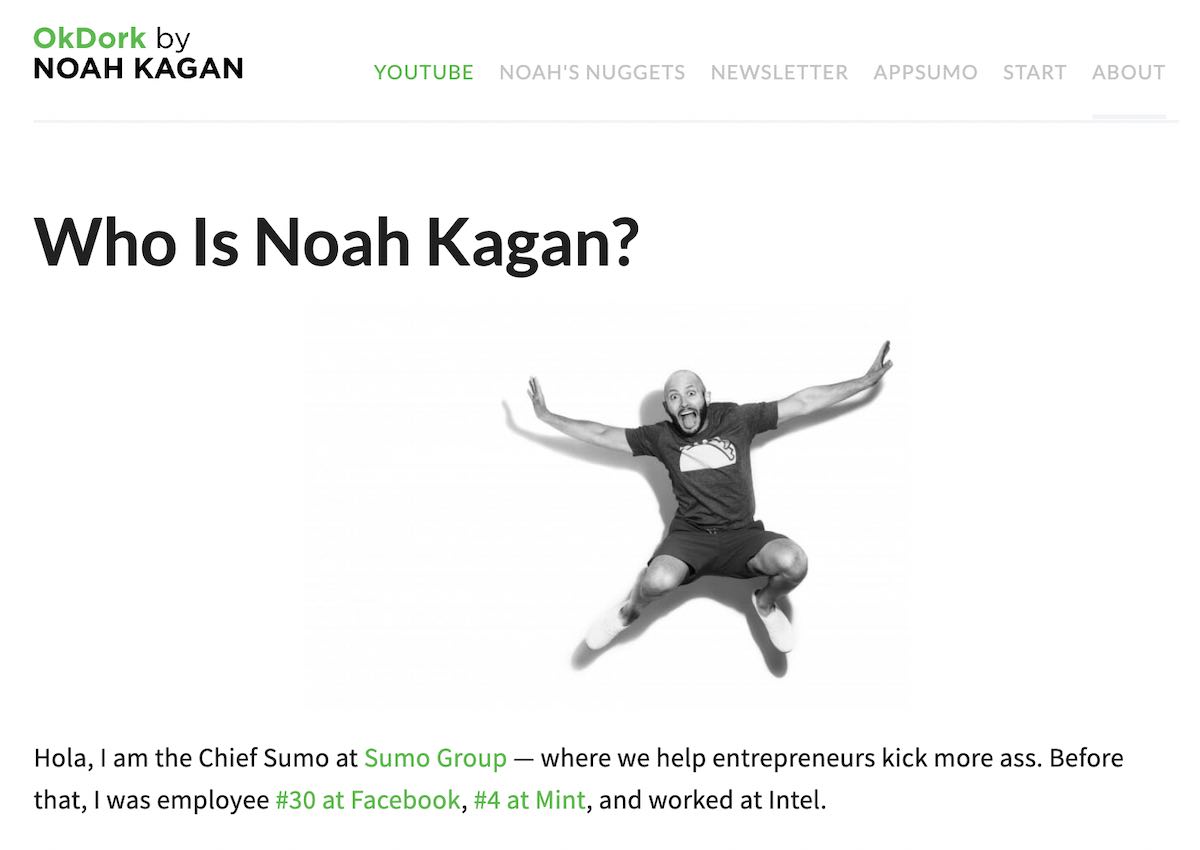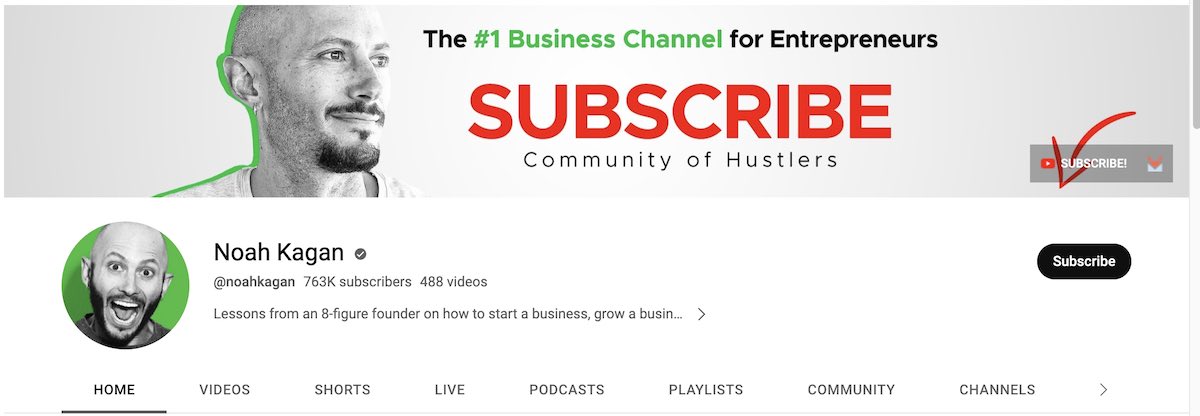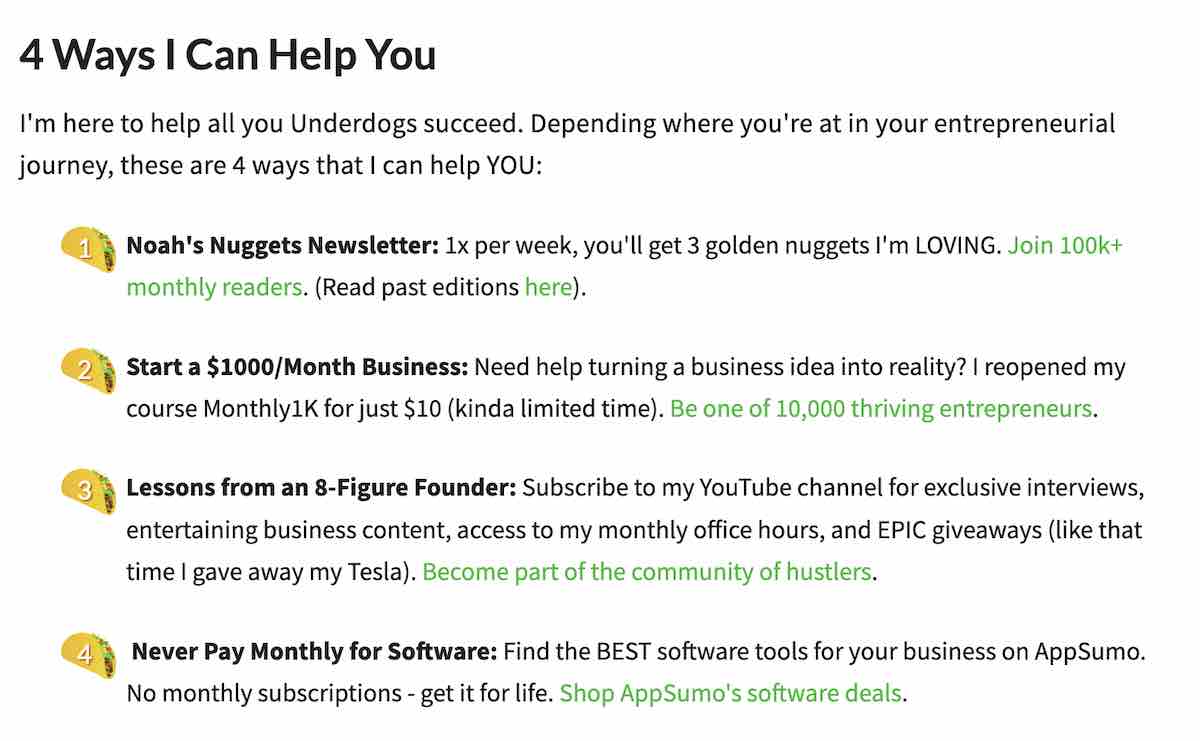10 personal branding examples for 2023


Most successful people, whether creators, entrepreneurs, startup CEOs, freelancers, or celebrities, create a personal brand.
And why do they spend so much time investing in their brands? Well, a strong personal brand helps you reach professional and personal goals.
We’re breaking down 10 compelling personal branding examples if you don’t know where to start. We’ll also share what makes an effective brand identity and offer personal branding tips to help you meet your goals.
What is a personal brand?
To state it plainly: A personal brand is your story and how you present yourself. It demonstrates your unique qualities and skills.
With a personal brand identity, you can connect with your target audience and stand apart from your competition.
For example, Teachable creator and money expert Tori Dunlap has built a strong personal brand. It demonstrates her value—helping millennials, women especially, with financial planning and career transitions.


What makes up a personal brand?
Your personal brand is made up of several elements—each one helps others get to know you and your value.
When creating your personal brand, include:
- A unique story: People connect with stories. Identify and share what led you to where you are.
- Skills: Tailor the skills you list to your expertise and goals. For example, someone teaching online coding courses may list tools and programming languages.
- Values: Your values show what you stand for and what others can expect from you.
- Design: Elements like the color scheme, logo, and fonts, make up your design. Put together, they create a visual brand that people can recognize.
- Personal brand statement: Create a catchy statement that immediately shows what you do and how you help your target audience.
Why develop a personal branding strategy?
When you build your personal brand, you create a unique selling proposition for yourself. It’s a way for people to understand and remember you and your brand.
The primary benefits of personal branding are:
- Credibility: It makes it easy for people to identify your skills and expertise, which helps you build credibility and trust.
- Opportunities: When you’re clear about what you offer and stand for, you can attract more opportunities that align with what you want to do.
- Control: Since you’re building your own brand, you have more control over how others perceive you.
- Visibility: Building a personal brand helps you stand out and reach more people, which can help you grow your business.
- Confidence: Reflecting on and showcasing what you bring to the table can boost your confidence.
10 personal brand examples
Below are effective personal brand statement examples by various entrepreneurs, including authors, course creators, and marketing experts.
Each has a personal brand that helps them connect with their target market, build trust, and reach their unique goals.
1. Aliza Kelly
Aliza Kelly, a Teachable creator, is a professional astrologer and bestselling author. She teaches courses on astrology and runs the Constellation Club, a community for others that are interested in all things witchy.


Why her personal brand works:
- Her tagline, “Meet Aliza, your new witchy bestie,” instantly connects with her audience and shows her fun personality and tone of voice.
- The design of her website also perfectly matches her brand. For example, the images are in frames that are similar to tarot card shapes.


- On her about page, she connects with her audience and builds credibility. She shares her experience, including co-founding Align, an astrology dating app.
- Her press features also reinforce her credibility. On her website, she includes a press section to show she’s been featured in Bumble, Refinery29, Cosmopolitan, and more.


2. Jay Clouse
Jay Clouse is a course creator, podcaster, and writer who helps others find their creative independence.


Why his personal brand works:
- His personal brand statement is above the fold of his website and is clear: “I help people become professional creators.” It shows what he does and who he helps.
- The subhead builds trust by showing that over 22,000 creators already subscribe.
- Then, on the newsletter page, he reiterates his brand’s value with the statement: “Become a smarter creator in just 10 minutes per week.”


Jay also has a company called Creator Science and offers many different products including:
- A podcast
- Online courses
- A newsletter
- Workshops
- A membership called The Lab
Yet, each product feels like an extension of Jay’s brand. Part of that is because the design uses the same colors, fonts, and more.
Download our guide on how to enter the creator economy and become profitable along the way.
3. Alice Thorpe
Alice Thorpe is a freelance graphic designer and content creator with over 122,000 subscribers on YouTube. She helps creatives improve their design skills by sharing her knowledge through her YouTube channel, Instagram, digital downloads, and online courses.


Why her personal brand works:
- Her casual and colorful design aesthetic is consistent on each platform.
- Alice’s authentic and cheery personality shows through her content, helping attract her target audience and build trust.
- Her brand statement, “Let’s design things and have fun together,” displays her skills and reiterates her fun character.
4. Tony Robbins
Tony Robbins is a reputable life and business strategist and author. He helps others create their dream lives through seminars, books, and coaching programs. He has millions of followers on Instagram, Twitter, and YouTube.


Why his personal brand works:
- He uses many professional images across his platforms, showing his confidence, authority, and authenticity.
- His branding also displays his charisma, energetic outlook, and drive to succeed.
- He connects with his audience by sharing childhood challenges.
5. Melyssa Griffin
Melyssa Griffin is a course creator, blogger, and podcaster who helps entrepreneurs scale their businesses. Over 20,000 students have taken her courses, and Melyssa has appeared in Business Insider, Forbes, and Entrepreneur.


Why her personal brand works:
- It relies on authority, empathy, and authenticity.
- Her playful images, videos, and the brand’s bright colors showcase her fun energy.
- Each part of her website establishes trust, with press features and real client testimonials. There’s even a success stories page that highlights results that clients have experienced after taking her courses.
She also clearly explains how each product—including quizzes, The Limitless Life podcast, and courses—helps her audience. For example, her online course page highlights the value, comparing the knowledge to getting a digital MBA. It also shows the benefits and why you should choose it—you get all that knowledge without the icky student loan debt.


6. Nesha Woolery
Nesha Woolery is a coach and content creator who helps women build online businesses.
Why her personal brand works:
- It’s direct yet welcoming at the same time to attract her target market.
- She shares her mission on her website: “I built a gentle business that supported the kind of life I dreamt of living.” Then, she highlights values like freedom, healing, security, and adventure.
- Her personal brand statement also shows her audience the value she offers: “Turn your dream life into reality through online business and mindset.”


7. Tiffany Aliche
Tiffany Aliche, better known as “The Budgetnista,” is a personal finance educator and New York Times Best Selling author. Over the years, she’s helped over two million women with their finances and built one of the strongest personal brands along the way.
In the finance space especially, you need to establish credibility and authority. Tiffany does this well by featuring her press features in reputable and often finance-centric publications like: The Wall Street Journal, MSNBC, CNN, and more.


Why her branding works:
- Her personal branding statement, “Learn to get good with your money,” clearly tells her audience how her expertise can benefit them.
- She uses her website and social media platforms to showcase her #LiveRicher movement. This represents her mission to make financial education readily available and easy to understand.
- Her brand design also uses colors associated with money—green and yellow—on every channel from her website to social media.
8. Jenna Kutcher
Jenna Kutcher is a marketing expert and best-selling author. Her Goal Digger Podcast is one of the top marketing podcasts in the country.
Her mission is to help others create a business and life that works for them. She has millions of followers on Instagram and over 90 million podcast episode downloads.


Why her branding works:
- She uses authenticity, playful colors, and pictures to connect with her target market.
- You can see a cohesive brand design on her website and social media pages, which helps build trust.
- She uses many mediums to share her expertise, including her blog, courses, and educational podcast.
9. Noah Kagan
Noah Kagan is a successful entrepreneur and content creator. He’s also the CEO of AppSumo, a company that offers software tools to help fellow business owners.
When it comes to strong personal branding examples, Noah has one of the best because it directly contributed to his growth.
For example, he’s built a consistent brand that includes his:
- YouTube channel with over 763,000 subscribers
- Newsletter with over 100,000 readers
- Instagram with over 200,000 followers


Why his branding works:
- The design of his site and brand is simple and highlights his value-packed content, skills, and expertise.
- He also highlights his credibility and experience helping businesses grow by mentioning he was employee 30 at Facebook and four at Mint.
- The same colors, tone of voice, and energy that’s on his site carry over to his YouTube, newsletter, and company.


He also clearly outlines four ways that he helps entrepreneurs with each product and channel.


10. Sade Kelly
Sade Kelly is a time management coach and content creator. She’s also a self-proclaimed go-getter and hype woman. She teaches ambitious women how to manage their time to balance their work, wellness, and relationships peacefully.


Why her branding works:
- Her empathetic language helps her build relationships with her target audience.
- The company name, The Fire Inside, inspires her brand voice. She creates recognizable sayings like “Ignite your life” and “Ignite the fire inside you,” to demonstrate how she helps others.
What do these examples have in common?
These personal branding examples are all unique but have key similarities to powerful branding:
- Consistency – They’re consistent in tone, design, and skills.
- Positivity – They each display a distinct personality, but all showcase positivity.
- Value – They demonstrate what they can offer their target market.
Keep these factors in mind when developing a personal brand for yourself.
Personal brand statement examples
Personal brand statements are catchphrases that introduce your brand.
Your personal brand statement should summarize your unique story, skills, and beliefs in one to three sentences. It should also tell who you help and how. It might be straightforward or show your personality more, depending on your style.
Here are some effective personal brand statement examples:
- “Being a business owner is challenging. It doesn’t have to be confusing. I’ll show you how.” – Terry Rice, business consultant
- “Empowering ridiculously good marketing.” – Ann Handley, digital marketing pioneer
- “Helping you build your influence with online video.” – Sean Cannell, YouTuber and coach
- “Grow your premium business, double your pricing, and land more high-end clients.” – Quanisha Green, business strategist, and educator
Build your brand with Teachable
A solid personal brand is essential for success. You can create a brand that uniquely reflects you with these personal branding examples and other helpful tips.
Teachable helps you share your expertise through online courses, digital downloads, and coaching services. Sign up for free today to start your online business.
Are you ready to build your brand and make money? Starting with a free plan to build your first course on Teachable can help you start.
Personal Branding FAQs
Below, we’ll answer common questions about personal branding.
What is personal branding?
Personal branding is creating a persona for yourself for professional purposes to demonstrate your unique skills, expertise, and value. A great personal brand can help you attract your target audience and grow a successful business.
What are personal brand statements?
Personal brand statements are catchphrases or taglines that tell your audience who you are and what you offer. When you write a personal brand statement, you want to include your personality and value.
You can show your brand statement on your personal website and social media channels.
How can you use your personal brand?
You should use your personal branding anywhere you can reach your target audience, including your:
- Marketing materials
- Products
- Social media
What are the 5 As of personal branding?
The 5As are the elements that make up a successful personal brand and include:
- Authenticity
- Authority
- Aspiration
- Affinity
- Appearance
Authenticity
To be authentic, stay true to your personality and values. Convey this in your messaging to help people connect with you.
Sometimes it can be beneficial to tell personal stories. For example, Alice Thorpe uses her website to share what led her to graphic design.
Authority
Representing authority in your personal branding shows you’re an expert in your niche and helps you build trust with your audience. You can display authority by highlighting your expertise, skills, and testimonials.
Aspiration
Aspiration illustrates your desire to achieve something and encourages your target audience to envision results. For example, Kelsey Foremost aspires to help entrepreneurs turn readers into buyers and displays this in her content.
Affinity
Affinity is perceivable talent or knowledge that lets people understand you know what you’re talking about. When you demonstrate affinity, your audience can trust you to follow through with your aspirations.
Appearance
Your personal branding appearance reflects how people see you and your brand. Showcasing your core values and personality can help you connect with people and stand out.
Keep the 5 A’s in mind when writing your personal brand statement, developing your marketing strategies, and creating content for your audience.
